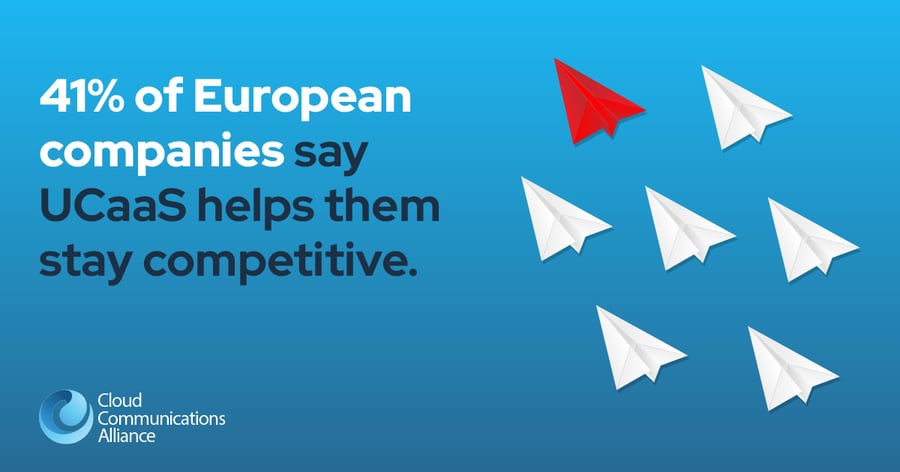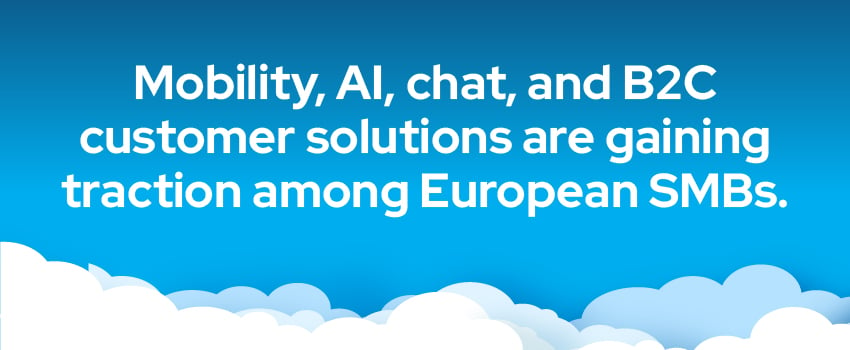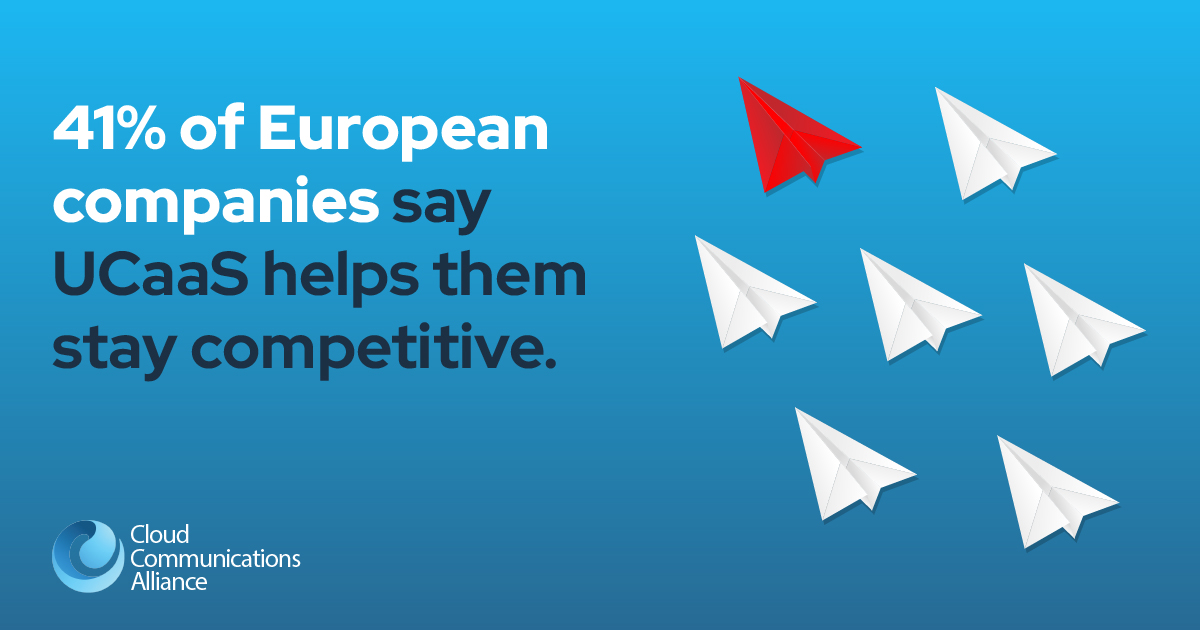4 Trends Shaping Cloud Communications in Europe

This is a guest post by Iain Sinnott, Head of International Carrier Sales at Enreach.
Cloud communications are booming in Europe despite growing economic pressures. Forty-one percent of European companies say UCaaS helps them stay competitive,1 so it’s no wonder the market is set to reach $148 billion – or just over €136 billion – this year.2
It’s important to understand that the cloud communications scene in Europe is very diverse. For example: what’s happening in the Nordic region, where providers are focused on making their solutions more mobile, wouldn’t necessarily see as much success in Mediterranean countries.
There is one thing we can all agree on across the continent: we want to understand what our customers want.
Top Trends in the European Cloud Communications Market
So what exactly do European customers want from their cloud comms solutions? There isn’t a simple answer to this, of course. Business needs vary by country, region, industry…the list can go on. However, there are a few market trends gaining popularity among European cloud comms providers, which I highlight below.
Segmentation
In Europe, there’s now a definitive split between what corporate and mid-market customers and those in the SMB space want. Hyperscalers like Salesforce and Microsoft Teams will continue to be core to corporations and the mid-market, which will always need communication solutions at scale. However, more SMBs have moved away from hyperscalers recently.
There has been speculation in the industry that this wouldn’t happen, but SMB customers are now focusing on mobility, AI, chat, and B2C customer solutions. Cloud comms providers thought SMBs wanted simplicity, but what they really want are effective solutions. That’s where independent service providers can come in and provide a more customized experience – with big-name UCaaS and contact center solutions sold under their brand.
Ultimately, we’re seeing a bigger focus on proper market segmentation throughout Europe. Providers are looking into what those individual groups want in their communication systems and fine-tuning their portfolios to meet those needs.
Collaboration
There are some very, very strong collaboration tools out there that businesses throughout Europe are adopting, especially if they already use other parts of a given product stack. For example, companies using Microsoft Teams have no reason to think there's a better tool for virtual meetings. But workforces that don’t use Teams and only need a virtual meeting room occasionally want to have a simple, cost-effective option whenever they need it.
Something we’re seeing European providers move toward is building solutions that cater to the entire workforce – not just knowledge workers. The entire workforce isn’t sitting at a desk staring at screens every day. That’s a key driver behind the mobility piece, but it ties into collaboration as well. We have to make sure we’re providing communication solutions that the entire workforce can use.
 Artificial Intelligence
Artificial Intelligence
I anticipate seeing more businesses adopt automated solutions as they discover technology is a friend – not a foe.
Small businesses are now starting to use chatbots, which lets them be available to customers 24/7 without having around-the-clock staff. That’s something we didn’t see a few years ago when only large corporations were exploring AI to automate simple tasks and free up employees for more important things.
The human cost is one of the biggest challenges that businesses, particularly European businesses, face. So it’s a happy coincidence that AI technology in the cloud communications space has reached a level of maturity that keeps it effective.
Customers have also matured in their use of AI – but they consider it acceptable until it’s not acceptable anymore. As long as businesses offer a route back to a human, we’ll see AI-powered multi- and omnichannel solutions gain ground as consumers demand more self-service options.
Think about it this way: 20 years ago, people hated IVR systems. They didn’t want to wait through the menus or press buttons; they just wanted to speak to a receptionist. Now going straight to a receptionist seems archaic. It’s all a process of evolution, so we’ll see a much higher adoption as AI gets better and more cost-effective.
 Cyber Security
Cyber Security
Customers in the SMB marketplace understand that security is important, but they’re not quite sure why. There isn’t a critical focus on data breaches in this space as in the corporate and mid-size market – smaller businesses are more afraid of ransomware and how expensive those attacks can be.
This is where providers can step in as a trusted advisor to inform SMB customers about other cyber security risks. What it comes down to is that cloud comms providers will need to work out how to explain the actual benefits of security tools – and why they’re essential for running a business.
The Biggest Risks and Opportunities for Cloud Communications in Europe
Service providers in Europe are increasingly overreading the narrative from hyperscalers. While these are great products, they’re still only products at the end of the day. The way to help your customers achieve a positive ROI is to ensure you’re offering a solution that meets their needs and that they’re using it correctly – which hyperscalers don’t do.
Our goal at Enreach for Service Providers is to support independent carrier service providers and independent brands. We make sure the results service providers help their customers achieve are attributed to their brand – not some big-name vendor – so they can control the narrative within their customer base.
Independent portfolios under an independent brand protect the margin better than anything. As long as you deliver a positive ROI for your customer, you can balance high service levels and realistic margins. I believe moving forward, we’ll work with an independent community that wants strong, innovative technology players prepared to back their brand.
I can’t wait to see how the European cloud communications space changes over the next few years. As part of the Enreach for Service Providers team, I’m happy to play a role in creating better communications experiences in Europe. If you want to learn how we can help your business stand out in the cloud comms market, give us a call. And if you’re looking for more global industry news and insights, check out these articles from the CCA or become a member today.
Sources:


